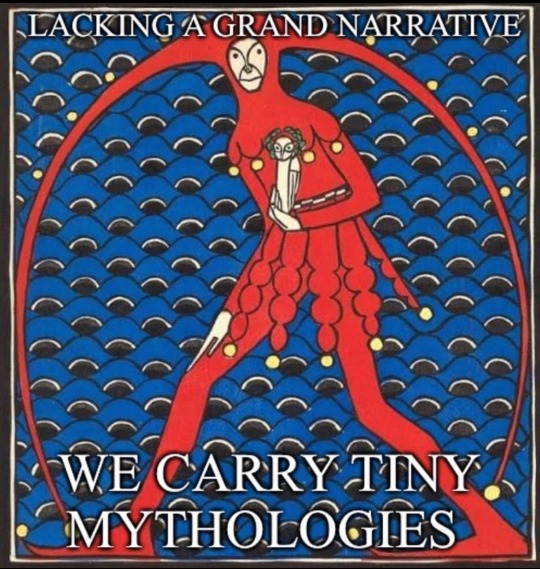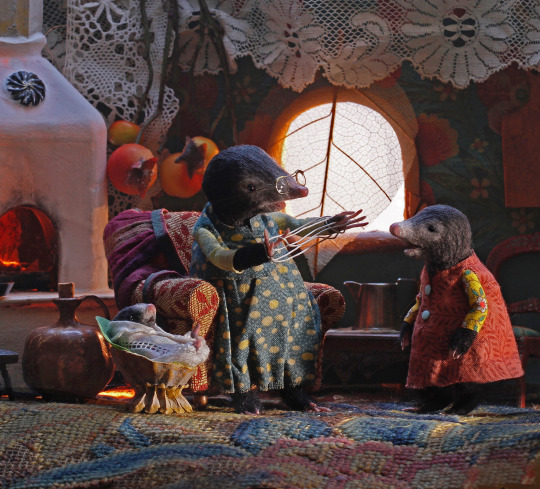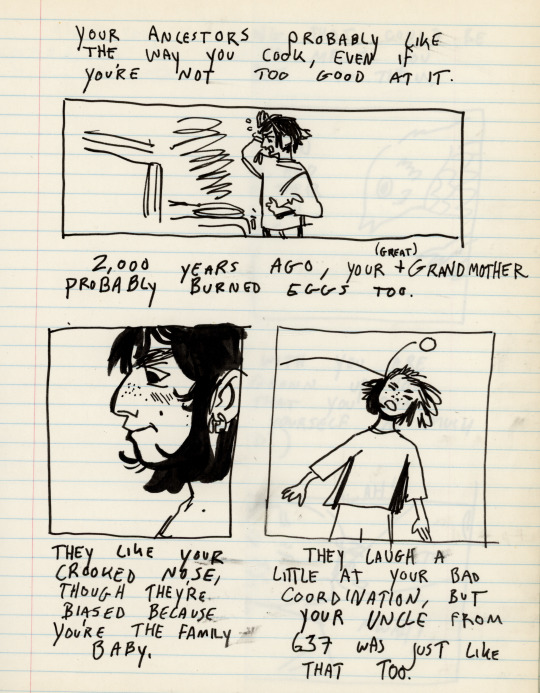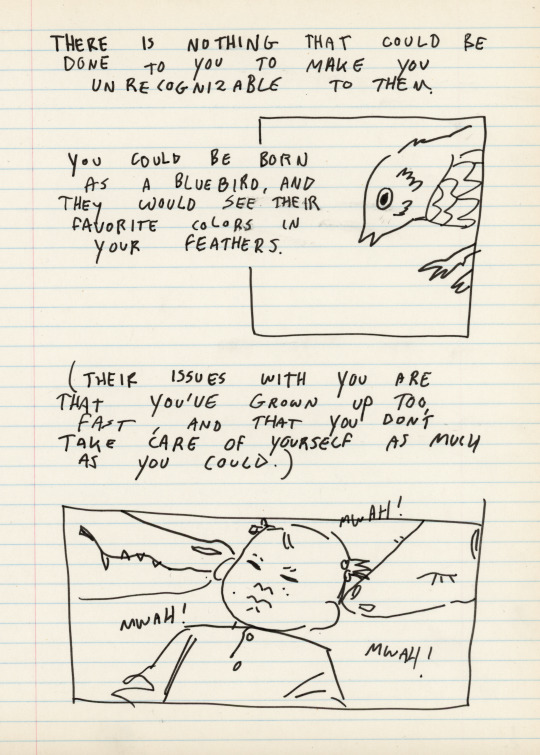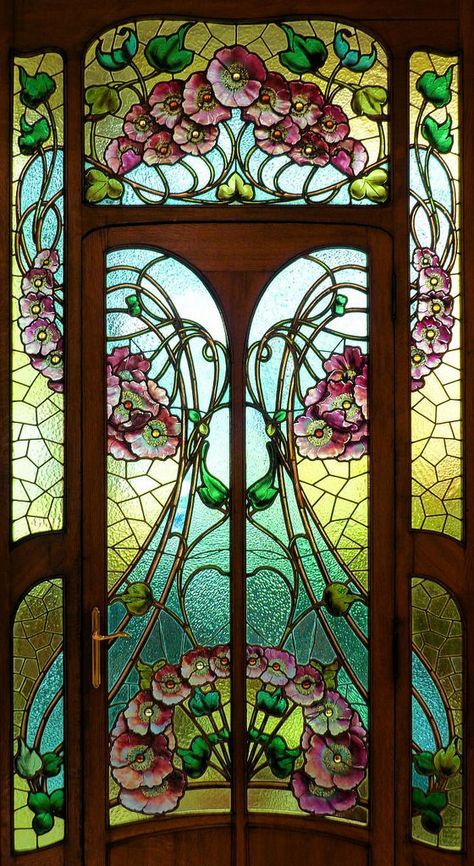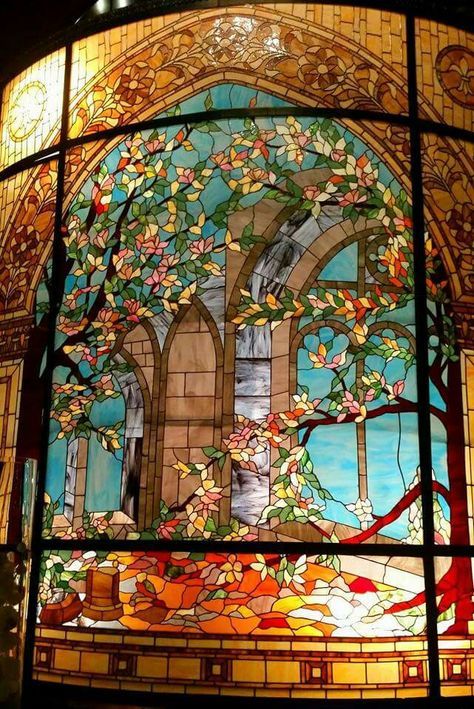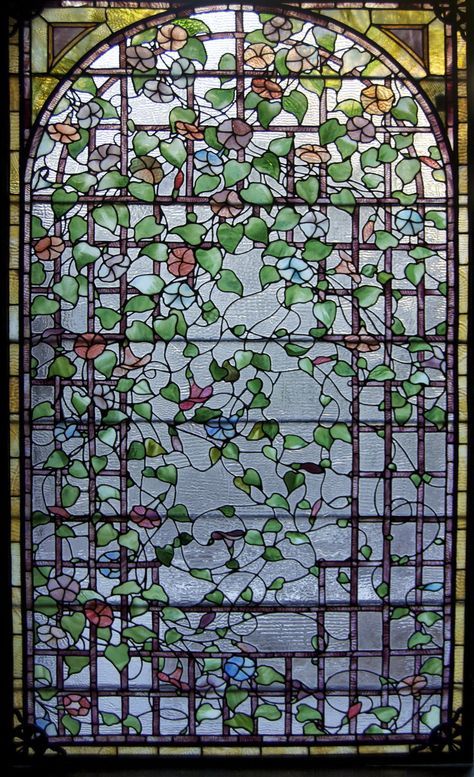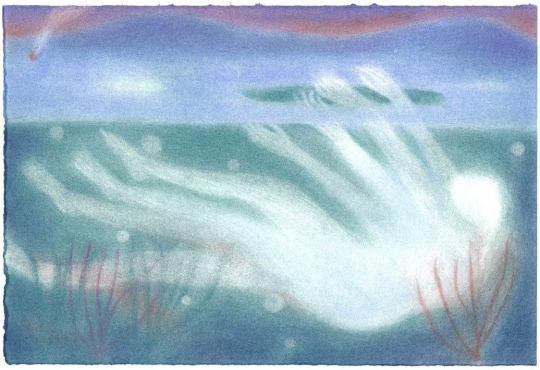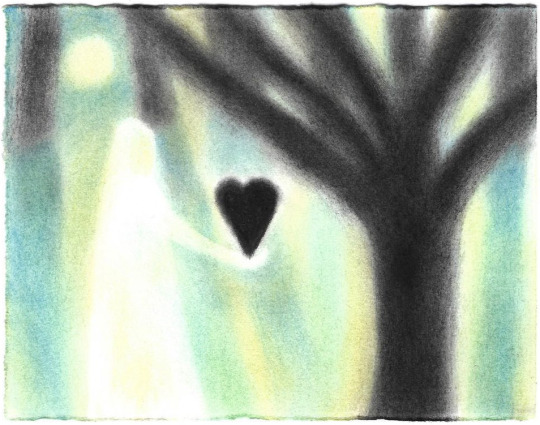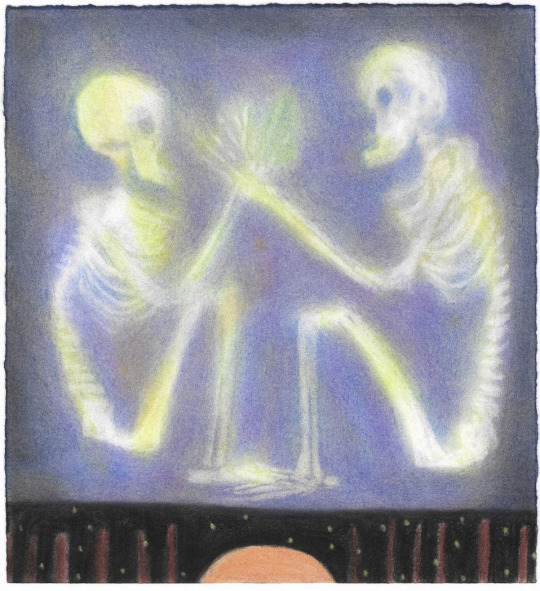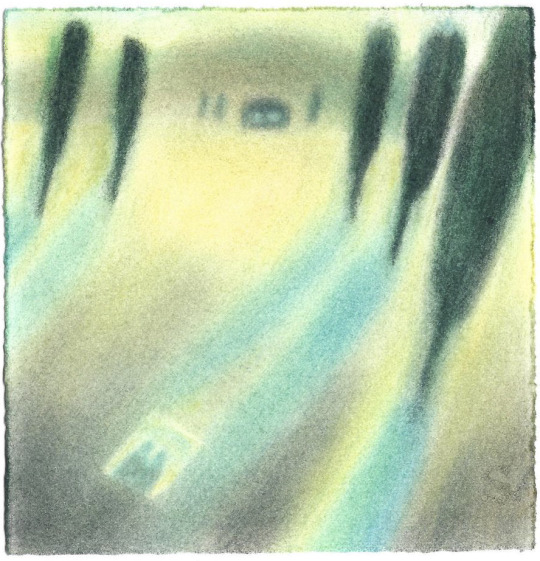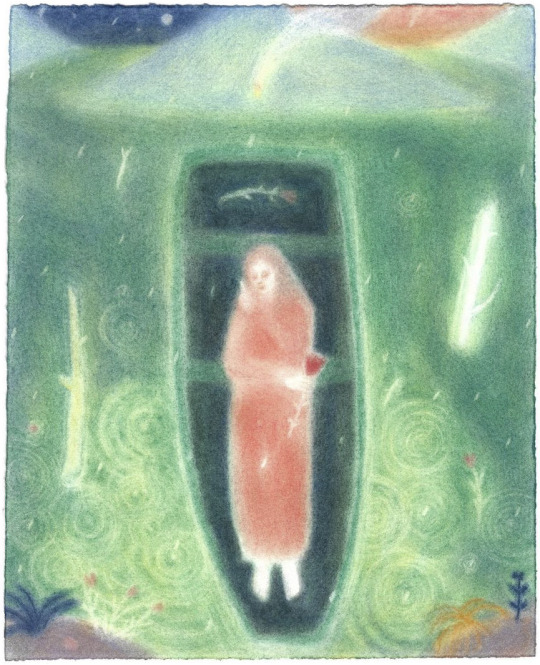hello all! if you stumbled here this is my religion/spiritual journey blog as i figure out my feelings about what path i want to follow. Feel free to follow and say hello.reblogs are not an Endorsement of anyone else views. I’m a trans freak my beliefs are my own
Don't wanna be here? Send us removal request.
Text
Bealtaine Customs
Bealtaine is almost here!
Bealtaine (bee-YAL-tin-eh) is the ancient Irish fire festival that starts the night of April 30th- Oíche Bealtaine- and is celebrated May 1- Lá Bealtaine (though festivities can last longer). Bealtaine marks the beginning of summer. In modern Irish Catholic tradition, May is celebrated as the month of the Blessed Virgin Mary.
These quatations are all pulled from the dúchas.ie folklore collection. To learn more, go to https://duchas.ie
Significance of Fire

The ashes was never put out on May Day long ago.
-Mrs. French, Co. Mayo
A central theme of Bealtaine is fire, as it is with all the Irish fire festivals. On the eve of the holiday, all fires were put out. A central fire was lit at the heart of the island, which spread throughout:
On May Eve the Druids lit the great sacred fire at Tara and as the signal flames rose up high in the air and then a fire is to kindled on every hill in Erin; till the whole island is on fire with fires.
-Patrick Healy Co. Galway
A similar tradition has been revived at the Hill of Uisneach.
Having a bonfire and spreading the light from that central point would be a great way to honor the sacredness of fire and celebrate Bealtaine.
Back then, people would also guide their cattle through two bonfires at Bealtaine, to cleanse and bless them for good health and abundance. Speaking of cattle...
Protecting Cattle

The people also tie a piece of red cloth on each cows' tail. This they tie on in the morning before letting them out. They do this to prevent the fairies from taking the cow's milk. Sometimes they tie a horse-shoe-nail or "táirgne crúth" in the cow's tails
-Mrs. Nora Maloney, Co. Mayo
On May Eve now people sprinkle Easter water on all the crops, cattle etc. and on the boundary fence. Perhaps this is apart from it's religious aspect a survival of the old dread of 'pishogues' when people dreaded harm to their crops and cattle.
Long ago the people went out on May morning and blessed the cow with a lighting candle.
-Patrick Lally, Co. Galway
And while we're talking about protection...
Yellow Flowers- Festive Protection
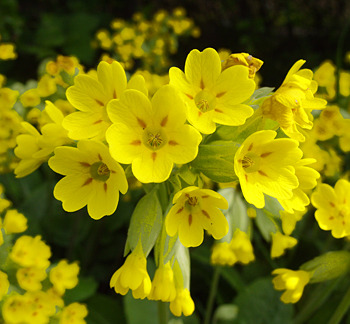
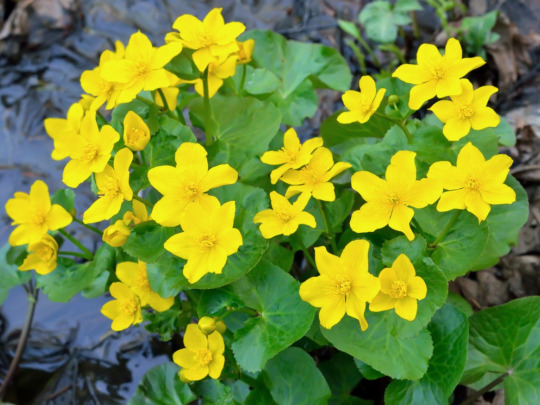
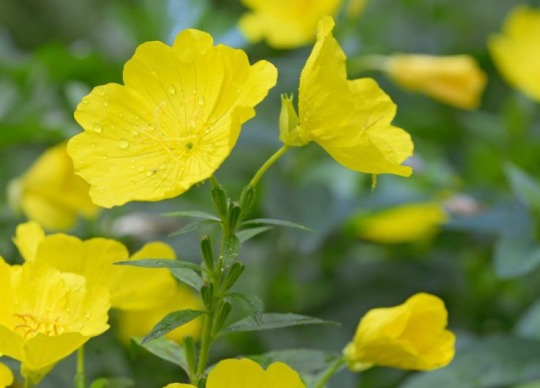
In years gone by the people used to throw a primrose in the byre door so that the fairies would not take away the milk from the cows for the year. It was at May eve that they threw this primrose in the byre door.
-William J Mc Laughlin
It is the custom for children to pick May flowers or Marsh marigolds on the last evening in April. These they throw on the doorstep or on the windowsill.
-Mrs. Norah Maloney, Co. Mayo
The first of May is called May Day or (Lá Bealtaine). On the eve of this feast the children gather may-flowers and place them on the window sills of the houses.
-P. Mc Closkey
"Cow-slips were hung on the door that day to bring good luck for the year."
-Martin Costello, Co. Mayo
Try hanging up yellow flowers at your doors and windowsills for protection and good luck! If don't have any flowers, don't worry. There's another way to welcome in good luck...
May Day Dew

It is also said that if you get up early on that morning and wash your face with the dew on the grass you will be healthy during the year.
-Collected by Anthony Clark
They washed their faces in the dew on May morning before the sun rose and and they would not get sunburned again for the year.
- Mrs. French, Co. Mayo
If a person wanted to preserve their beauty , they would have to get up one hour before sun-rise and wash their face in dew off the grass on May morning.
-Collected by Amy Gilligan, Co. Mayo
That's all well and good, but there is something more sinister that May morning dew is useful for...
Baneful Butter Stealing
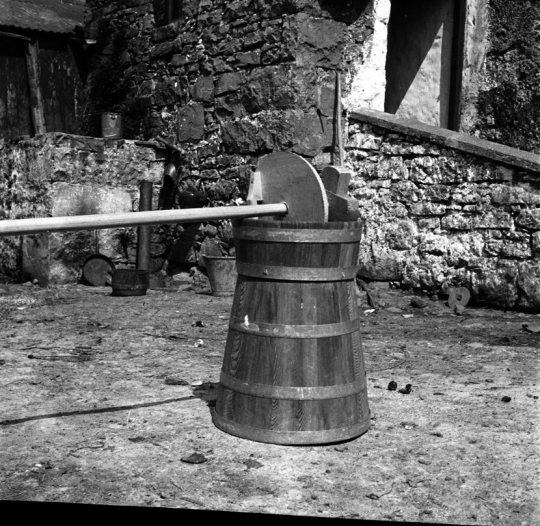
Long ago, on May morning, lots of old woman went out in the morning before the sun arose and swept the dew of the grass by pulling a long rope after them and calling, "Come all to me, come all to me.” This was a kind of witchcraft, taking away butter of other people’s milk.
-Collected by Rudy Stronge, Co. Donegal
It is also believed if one goes out early and milks the neighbour's cow, they will be able to get all the butter from that cow's milk so they will have double the supply while their neighbour will not get any.
Long ago on May morning some people used pull three ribs from the cow's tail and take clay from her hoofs and bring it home. Then that person would have butter from the cows she did this to and the person to whom the cows belonged would have none after churning.
-Michael Costello, Co. Mayo
Some women used get a twig of mountain ash and put it under the churn on May Day and so get all the butter from her neighbours churn, on condition that she said she wanted the butter from her neighbours churn while making her own.
-Mrs. Butler, Co. Mayo
While I don't condone butter theft, Bealtaine seems to be the right time to do it. Let's look at another way to celebrate!
The May Bush


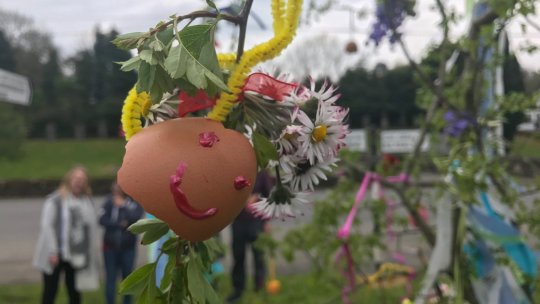
On May day morning, children get a small haw-thorn bush or at least a branch of one on which there is haw-thorn in bloom. On this bush they tie all kinds of coloured ribbons, papers, tinsel or other decorations left after the Xmas decorations till it is a gorgeous sight.
-Collected by Joan Martin
While hawthorn is the traditional tree chosen for the May bush, it's important to remember that the Irish tradition states to never ever bring hawthorn indoors.
This quote's sort of a miscellaneous one, but I thought it was interesting.
On May Night long ago the people used to leave a cake and a jug of milk on the table because they thought the Irish who were buried in America and other countries used come home on that night and visit their own home. Another old custom was to leave the doors unlocked that night. They considered it unlucky to give butter or milk way to any person on May Day as they would be giving away their luck. No stables were to be cleaned out on that day. The first person to go to the well in the morning was supposed to have luck for the rest of the year. It is not right to give money to anyone on that day. But if you get money on that day you will be getting it for the year."
-Mrs. Joyce, Co. Mayo
Ah, can't forget the ancestors. Or the diaspora! ;)
An incredibly common tradition I saw while scrolling through dúchas (I really recommend you do it yourself! They have everything!) was that milk, coals, salt, money, or really anything isn't to be given away at Bealtaine, or you'll lose something for yourself. Something supernatural about Bealtaine surpasses the Irish tradition of hospitality. This to me really highlights a theme of abundance. Welp, that's all I have for now!
🌼☀️Beannachtaí na Bealtaine oraibh!☀️🌼
317 notes
·
View notes
Text
Irish Folk Magic: Resources
Hello! So I’ve been asked by a few people about where to find resources on irish folk magic so I thought I’d share where I get my info from in a post.
Remember that Irish folk magic is not an organized practice, so there is no one book or one place to go for it (Though I would love to write a book on it in the future!) At the moment bits and pieces of the practice are found within folklore, charms and cures, superstitions, passed down through Christian families and within tales of the Bean Feasa (Wise woman), irish cunning folk and Fairy Doctors. Use these terms when you’re searching for more info in the future!
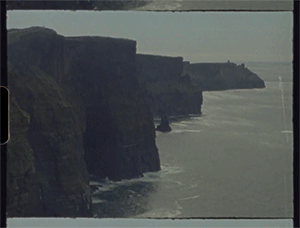
Note: I recommend you have a good understanding of witchcraft in general before you delve into these resources so you’ll know what to look for. Although Christianity is very tied to irish folk magic, you can look past it and pay close attention to what herbs, plants or items they are using, how they use it and what they use it for. These resources are not going to spoon feed you irish folk magic, you need to look for it within the texts and take note of it yourself if it’s useful to you. For example, In the book “Ancient Cures, Charms and Usages of Ireland”, there is a story of a Priest who performs an exorcism on a possessed man. The Priest beats the man with a stick of Blackthorn to banish the demon from his body. From this, I then took the note “Blackthorn is used for banishing demons or negative spirits”. If you keep this in mind while you research, you’ll find lots of useful stuff!
Either way, I will still be making more posts on irish folk magic when I find more useful info!
Books: ***Some links here you can read the whole book for free!
Irish Folk Ways by E. Estyn Evans
***Ancient Legends, Mystic Charms and Superstitions of Ireland by Lady Wilde.
Ancient Cures, Charms and Usages of Ireland by Lady Wilde (A lot of stuff in here is unsanitary, immoral or silly despite them being legitimately used and believed in. Take things in this book with a grain of salt but make use of the herbal, edible and tree usages! Do research on the plants before you use them yourself. Always be cautious with unknown plants)
***Irish Druids and Old Irish Religions by James Bonwick
The Book of the Cailleach : Stories of the Wise Woman Healer
Witchcraft and Magic in Ireland by Andrew Sneddon
***Irish Cursing and the Art of Magic by Thomas Waters
Irish Superstitions by Daithi O hOgain
Irish Witchcraft from an Irish witch by Lora O'Brien (The title for this book is misleading. It’s more irish paganism than witchcraft but it’s useful if you’re looking to practice both irish folk magic with irish paganism)
Fairycraft by Morgan Daimler (This is more of a modern take on how to incorporate the irish Fairy Faith into modern witchcraft practices, kinda like a modern version of the old Bean Feasa or Fairy doctors did)
Online:
Duchas https://www.duchas.ie/en Duchas is a huge collection of irish folklore, gathered and written down here in Ireland. Collected from old folk who still practice folk magic, superstitions, folk medicine or remember their own grandparents doing so.
It’s confusing at first but type in a word you’d like more info about and many documents relating to the word will pop up. Example: Lavender- https://www.duchas.ie/en/src?q=lavender If you click on the title, it’ll open the page up for you and the digital version of the document will be on your right which makes things easier to read. From this search I learned that soaking your bed sheets in lavender and rosemary water will help fight sleeplessness! Very useful for magickal workings :) If you search around and try different words, you’ll find hidden gems!
The Witch, the Bean Feasa, and the Fairy Doctor in Irish Culture By Morgan Daimler https://www.academia.edu/17823067/The_Witch_the_Bean_Feasa_and_the_Fairy_Doctor_in_Irish_Culture Check out Morgan Daimler’s books on irish paganism, her stuff is fantastic!
Bean Feasa https://beanfeasa9.wordpress.com/ This website is a modern take on the irish Bean Feasa. There’s a bit of valuable info on there that I think would be good to know. Bean Feasa were irish wise women (Woman of knowledge) known to heal using herbal remedies and help from the otherworld.
Biddy Early https://en.wikipedia.org/wiki/Biddy_Early Biddy Early was a famous irish wise woman and possible witch. Research on her could be very beneficial when researching irish folk magic. There’s a book on her that’s probably out of print so it’s expensive, but have a look around and try to find a different copy if possible. https://www.amazon.com/Biddy-Early-Wise-Woman-Clare/dp/1856353168
Others:
https://ogham.celt.dias.ie/menu.php?lang=en&menuitem=03 This website is a good quick way to write in Ogham
Podcasts:
Folklore Fragments by UCD (They have loads of episodes on youtube and they are very useful! Keep a pen and paper ready to write down useful info)
youtube
149 notes
·
View notes
Text
Irish Folk Magic: Curses
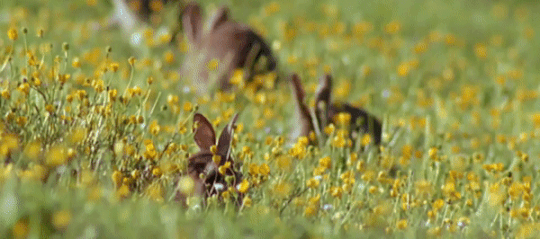
In Irish, the word for curse or evil spell is “Piseog” (Pee-show-g). It is usually a form of sympathetic magick, meaning the magickal use of an object or action to symbolically represent a person, event or place. Piseogs were often cast on May Eve (Bealtaine)
It was common to bury an egg in your targets garden. The egg represented the household. When the egg begins to rot, so too will the households wealth, health or fortune.
Placing raw meat (bacon or chicken for us modern folk, or traditionally a pig or chicken carcasses) was said to ruin your targets crop and cause misfortune. In turn however, the person who casts the piseog gains the wealth, fortune and a successful crop.
Wake up before sunrise on May morning and visit a spring well situated under an old oak tree and skim the top of the water with a saucer while chanting your targets name. This piseog prevents the targets milk from having cream and it will give you all their cream instead.
If you stand in front of your targets property while holding a long rope and swing it to and fro while saying “leath mo chuid ime-se agus lán do chuid ime-se" which meant “half of my butter and all of your butter” you will get all your targets butter.
**Butter, milk and cream can represent wealth or success in modern workings.
Note: Milk and butter was extremely valuable to the irish. It was the difference between life and death, wealth and poor. Irish witches were often called “Butter Witches” as many of their curses or actions within the christian era revolved around stealing milk and butter. The witches were also said to turn into a Hare as a disguise when stealing the goods. These piseogs can be cast with the intention of taking away wealth/ success from a person, using butter or milk symbolically to represent it.
Here’s some simple irish curses:
Fán fada ort Long may you be astray
Léan ort Sorrow betide you
Briseadh agus brú ort Strife and stress upon you
Lagú cléibh ort Weariness of heart upon you
Nár eirigh an lá leat That you may not be successful on the day
Náire agus aithir chugat That you may be shamed and disgraced
Go n-imi an droch aimsir leat That the bad weather leaves with you Dul go h-olc ort Bad luck to you
105 notes
·
View notes
Text
#this is SO HARD#banger after banger after banger#but i went between the lions#THEY HAD A SEX THERAPIST TEACHING GRAMMAR SHUT UP THATS EVERYTHING#the puppets where EVERYTHING
12K notes
·
View notes
Text
it's because youre always on that damn illuminated manuscript
30K notes
·
View notes
Text
so unrelated but have you guys heard about what's going on in the uk? our main gas company has been breaking into homes of single mothers, the disabled and other such vunerable groups and replacing our gas meters with smart meters while we're not home through a legal loophole. so. lol
38K notes
·
View notes
Photo




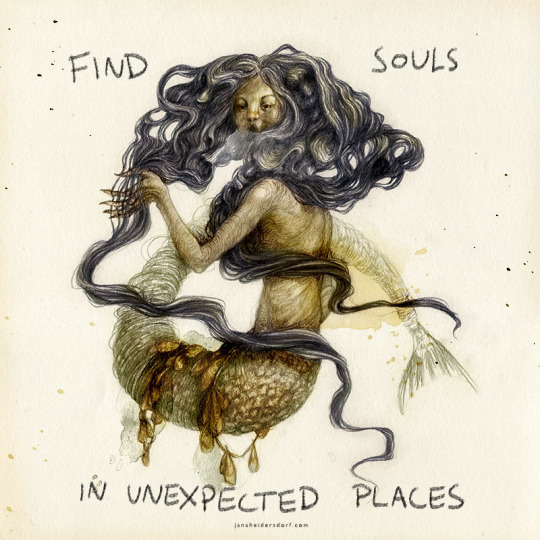
Mermaid Lessons pt 1 MERMAID BOOK | Mermaid Original Artwork
3K notes
·
View notes
Text

and he killed the poets. He chopped them up and chopped them down. He did not leave one poeteen of them all. He put them out of the world and out of life, so that they stopped being, and no one could tell where they went or what had really happened to them; and it is a wonder indeed that one can do that to anything let alone a band. If they were not youngsters, the bold Fiacuil could not have managed them all. Or, perhaps, he too had a band, although the record does not say so; but kill them he did, and they died that way. Fionn saw that deed,
Reading about Fionn lately, feeling things.
#fioan#oh gods how do I tag this#irish mythology#mythology art#irish polytheism#Irish paganism#James Stephens#self tag: Devonal art#Fionn Mac cumhail#fionn mac cumhaill#Fionn Mac cumhail mythology#queer pagan art#I’m new posting this kind of stuff online if you come across this hello!#celtic paganism#celtic polytheism
6 notes
·
View notes
Text

oh my ggod
2K notes
·
View notes
Photo
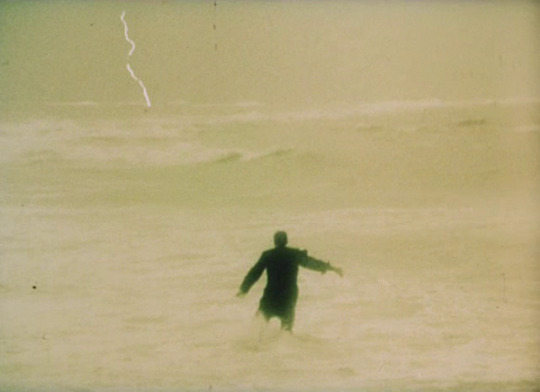
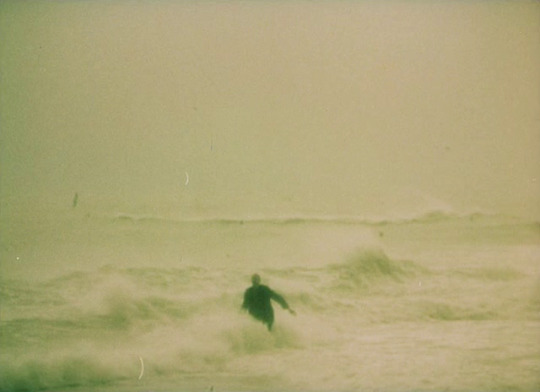
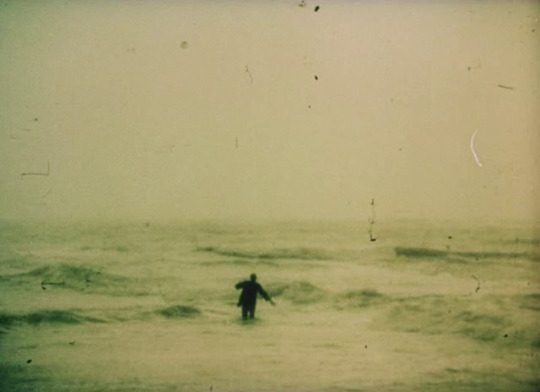
Posetitel muzeya (1989) Dir. Konstantin Lopushanskiy
45K notes
·
View notes
Note
Hey Mate, got tips for Brigid Worship that doesn't involve American/English/Wiccan stuff? I'm an Irish ex-Catholic who's trying to worship the Tuatha Dé Danann (I'm mainly focusing on Brigid because I loved her Saint equivalent growing up), but a lot of my research keeps showing me English/American Neogpagan and Wiccan Shite. Any advice?
hey mate! i’ll link some resources for you to peruse, hopefully they help. mix up of gaelic-centric and celtic-centric pagan resources
Gaol Naofa (a website discussing Gaelic polytheism)
Tairis (another website discussing Gaelic polytheism)
An Introduction to the Tuatha Dé Danann (video)
Na hÉireanneach
A Smaller Social History of Ancient Ireland
Pagan Portals - Gods and Goddesses of Ireland: A Guide to Irish Deities
Gods and Fighting Men: The Story of the Tuatha De Danann and of the Fianna of Ireland (not sure where to link, this was lent to me! fer sure you can find it though)
The Cailleach in Irish Megalithic Traditions
Druids, Deer, and Words of Power: Coming to Terms with Evil in Medieval Ireland
The Book of Celtic Magic: Transformative Teachings from the Cauldron of Awen by Kristoffer Hughes
The Religion of Ancient Celts
Legendary Fictions of the Irish Celts
Brigid of the Celts
An Introduction to Celtic Reconstructionist Paganism
The Tain (amazon bleugh)
Irish Imbolc Customs
Scottish Deities: Brighde
Brighid, Goddess and Saint
Tending Brighid’s Flame (amazon bleugh)
How to Make a Brighid Cross from Rushes
to keep in mind while reading: Cailleach is not a member of the Tuatha Dé, and her lore supersedes theirs by a long shot. The Cailleach - Brighid dichotomy is specifically a Scottish folkloric tradition and does not appear in Irish folkloric tradition.
as far as personal experience, i don’t know much about brighid. never formed a bond with her, honestly, and she’s never shown interest in me in return. but i still celebrate her feast and do a lot of basic worship of her that day.
my main tip for you would be that, well... it’ll seem harsh, but coming from a fellow irish person, the tuatha de danann are nothing like the catholic god. they don’t love you unconditionally, and they aren’t omnipresent or all knowing. wise and powerful, fer sure, but your relationship with them will be completely different and unfamiliar at first.
the irish deities were originally venerated ancestors. they became divine as the legends of them spread. the tuatha de danann are more like if an EXTREMELY powerful and respected war general was your landlord. offerings are less about connection and more about payin’ your rent!
at the bare bones basics: there was an agreement between humans and them that they’d retreat from the war that was resulting in the near-extinction of both their peoples, IF the human invaders would leave part of their harvest goods for them on the mounds and edges of forests and windowsills on certain fests and holidays. with that deal struck, the tuatha de danann retreated underground beneath the faery mounds and very soil we stand on.
so keep in mind: the gods do not love you until you build that relationship. they’re not your parent, they’re not a friend. they are wiser, stronger, and more powerful than you in every way. holy fear should be part of it at first when it comes to irish deities. obviously you can still form a close bond, even worship them or become a close communicator! but you have to earn that first.
#i’ve come and gone from online spaces cause the wiccan™️ shit was too much to Porsche through#and diving through tumblr again and finding this is truly a breath of fresh air!#thanks so much for these lovely resources!
586 notes
·
View notes
